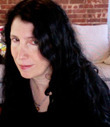Caroline Leavitt's Blog, page 51
November 17, 2015
Obsessed with the sky? Who isn't? Susanna Hislop talks about STORIES IN THE STARS: AN ATLAS OF CONSTELLATIONS
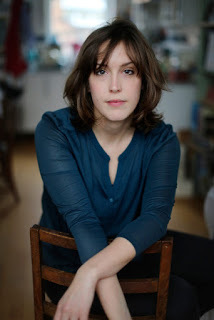
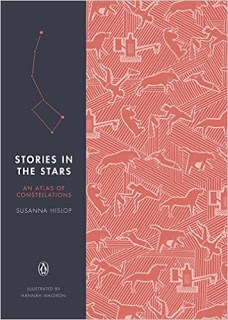
Who doesn't wish on stars or marvel at the sky? Stories in the Stars: An Atlas of Constellations is an amazing, beautifully illustrated book about the magic of the sky. I'm honored to have Susanna Hislop here to talk about it. She is an actor and a writer and the Artistic Director of Slip of Steel, and is an editor of the online literary quarterly The Junket. Her first book Stories in the Stars: An Atlas of Constellations was BBC Radio 4’s Book of the Week over Christmas 2014. Thank you so much, Susanna.
Why do you think we are all so fascinated with the sky?
It’s right on top of us! It engulfs us. It lights us, darkens us, rains on us, shines on us, feeds and kills us: and even now, in an age governed by science and reason, most of us – and certainly me – have absolutely no real sense of what it is or how it works. Mostly it just makes us feel, keenly, our place in some vast and greater truth, or rather chaos or untruth: filling us with magic and fear.
What do stories about the constellations really tell us about ourselves?
I think they tell us about our need to name things. To place things, make sense of things, and also, more darkly, to own things. We like to tell stories – lies in fact – about who we are and how we got here to make us feel as if we mean something. And of course historically, the differing constellation narratives tell us a huge amount about the different societies that invented them (I was particularly interested in tracing the socio-political metamorphoses of the women in stars). Having said that, one of the things I found most incredible researching the book, was how several constellation myths are in fact echoed across continents and time by entirely different people and cultures – these uncanny similarities tell us something essential about what it is to be human, and about the very profound – although in modern society, often ignored – relationship we have with nature, that very physical, animal instinct and understanding of earth and sky.
I love the text, which is as humorous as it is edifying and surprising. There are to-do lists, celestial texts, and so much more that I found myself grinning while I was reading. What was it like writing this book? Did you have rituals to get you writing?
Crikey – a grinning reader is a wonderful compliment. Thank you. I loved writing this book – it was gift as a writer. Getting to research thousands of stories from across time and the universe; being able to play with them and to jump around in between fact and fiction as much as I liked; while never having to stick at one long enough to get stuck or bored. Having said that, there are 88 constellations and that was a fairly exhausting number. My rituals to get writing were therefore: remembering that I still had 88 (or 68, 48, or STILL, 28…) constellations to go; the fact that the deadline was looming ever nearer like some terrifying asteroid; and a general sense of doom and dread. I had a star chart too – like all writers I’m a lazy child at heart, so I tried to discipline myself as if I was in primary school, a gold star for every constellation I finished…
I also loved the quirky illustrations! Did you work with the illustrator, Hannah Waldron? Did you know the image you wanted or did you leave it up to her?
Yes – this was one of my favourite things about the project. The book is of course as much about the illustrations, and Will Webb’s beautiful design, as it is about my writing, and it was a really collaborative process. Hannah, the editor Sarah Rigby and I would have general discussions about each constellation, about what I was working on and what images would work, and then I would go away and finish writing and Hannah would create her illustrations in response. It was such a wonderful pleasure to work like that. I come from a background of making devised theatre and I always feel happiest creating things collectively.
What I also love about this book is that it makes you think about the stars differently, which creates a new wonder. Stories in the Stars is also stories about you the writer in many ways. Can you talk about this, please?
About it being about me the writer? Hmm. I suppose one answer would be that like all writers I am not only childish and lazy but also self-obsessed. But, a less facetious answer would be that I am very interested in the nature of storytelling – of the gap between truth and lies, and of the relationship between the teller and their tale – and that that is something that preoccupies all of my writing – both in prose and for the stage. But as I said earlier – humans making up stories about the stars is all about them wanting to talk about themselves, and that is something I was playing with in the book too. And so not all the versions of myself in the book are true.
What’s obsessing you now and why?
The next thing I am writing. And why I am not writing it.
What question didn’t I ask that I should have?
Oh that’s quite enough questions. They’re so difficult to answer without sounding like an awful human being.
Published on November 17, 2015 19:12
Stefan Kiesbye talks about THE STAKED PLAINS, why his wonderfully dark books are actually love letters, Taylor Swift, and more
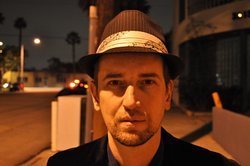
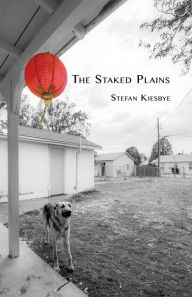
I love books that are unsettling, dark, thorny in character. Which is part of why I love Stefan Kiesbye's work. I dare you to look at the cover of Your House Is on Fire, Your Children All Gone and not be unnerved. Go ahead. I dare you. He's also the author of Next Door Lived a girl, and The Staked Plains, which I loved so much, I blurbed it. Yes, I did. I called it spare, poetic, with broken glass prose to reveal a story about land, loss, violence and longing. Stefan is truly one of my favorite authors and I'm so jazzed to have him on the blog!
Like your extraordinary Your House is On Fire, Your Children All Gone, The Staked Plains deals with disturbing morality. You have a way of writing that gets under your skin and travels there. The Staked Plains was unsettling and scary and it just doesn’t let go of you. So, this makes me want to ask you about your world view in general. Talk!
My world view is borrowed from Billy Wilders’ One, Two, Three: “It’s hopeless, but not serious.” I don’t think that human occupation of this planet leaves us any real hope. Our history is bleak, our attempts at getting more enlightened have failed. We are running out of natural resources, environments that have not been irrevocably poisoned, and time. Just watching political debates makes clear that we are morally bankrupt. Our hope to right the ship at the last minute is like the hope of the sinner to have one last moment to redeem him/herself. It’s very silly, really. In Bret Easton Ellis’ The Informers, Jamie (a vampire) asks his shrink to define the vanishing point. He then goes on to say, “We've already been there. We've already seen it.” This is how I feel about where we are. And yet, it’s comedy, not tragedy.
How did you know this was a novella and not a novel? Was it planned that way?
I love short books. I’m a sucker for novellas, slim books that read like something that should never have been printed in the first place. Notes from a serial killer, confessions of Satan, rumors about the underworld jotted down by a half-crazed junkie.
There are always surprises in writing--what were yours?|
I created a monster in Jenny Prescott, but I love her dearly. Not because I like her – she kills everything she touches – but in a corrupt world, she’s the only one who doesn’t believe she’s better than she is. She’s a moralist – and one of the worst people imaginable. That was truly surprising, to have a character you might despise, but who acts with a conscience.
I also want to talk about the structure of the book. Each chapter is prefaced with a verse from The Bible. How and why did you make that stylistic decision?
That was because of a real life incident. I was teaching creative writing in New Mexico, (I’ve since moved to California) and one day I received a packet in the mail. It contained a book by an obscure evangelist scholar, who wrote about angels and quoted passages in the Bible that talked about them. It was the strangest item that had ever been sent to me (other than raisin-cinnamon bagels). The book had already been published and the author asked me, an atheist and writer of very dark books, about advice. I loved that. It was a beautiful moment. And to me, it defined a part of New Mexico, what it felt like to live in the Llano Estacado.
What’s obsessing you now and why?
I’m listening to Ryan Adam’s cover of Taylor Swift’s 1989, a lot J Writing-wise, I’m still looking for a way to write something, anything, that is as devastating as Dead Can Dance’s “Black Sun.”
What question didn’t I ask that I should have?
This is not an answer to a question, really, but at times I’m worried that people read a book of mine and feel as though I’m exorcising demons or taking revenge on places I lived in. It’s really hard to explain, but the books I write, from Next Door Lived a Girl to The Staked Plains, are love letters. Yes, terrible things happen, but the reader, above all, should feel consoled, soothed even. My books are as much about places as they are about characters, and I loved them all. The most desolate place and the most evil character – they are still my loves.
Published on November 17, 2015 19:04
Peter Golden talks about WHEREVER THERE IS LIGHT, chocolate chip cookies, rock and roll, and so much more
<!-- /* Font Definitions */ @font-face {font-family:"MS 明朝"; mso-font-charset:78; mso-generic-font-family:auto; mso-font-pitch:variable; mso-font-signature:-536870145 1791491579 18 0 131231 0;} @font-face {font-family:"Cambria Math"; panose-1:2 4 5 3 5 4 6 3 2 4; mso-font-charset:0; mso-generic-font-family:auto; mso-font-pitch:variable; mso-font-signature:-536870145 1107305727 0 0 415 0;} @font-face {font-family:Cambria; panose-1:2 4 5 3 5 4 6 3 2 4; mso-font-alt:Cambria; mso-font-charset:0; mso-generic-font-family:auto; mso-font-pitch:variable; mso-font-signature:-536870145 1073743103 0 0 415 0;} /* Style Definitions */ p.MsoNormal, li.MsoNormal, div.MsoNormal {mso-style-unhide:no; mso-style-qformat:yes; mso-style-parent:""; margin:0in; margin-bottom:.0001pt; mso-pagination:widow-orphan; font-size:12.0pt; font-family:Cambria; mso-ascii-font-family:Cambria; mso-ascii-theme-font:minor-latin; mso-fareast-font-family:"MS 明朝"; mso-fareast-theme-font:minor-fareast; mso-hansi-font-family:Cambria; mso-hansi-theme-font:minor-latin; mso-bidi-font-family:"Times New Roman"; mso-bidi-theme-font:minor-bidi;} .MsoChpDefault {mso-style-type:export-only; mso-default-props:yes; font-family:Cambria; mso-ascii-font-family:Cambria; mso-ascii-theme-font:minor-latin; mso-fareast-font-family:"MS 明朝"; mso-fareast-theme-font:minor-fareast; mso-hansi-font-family:Cambria; mso-hansi-theme-font:minor-latin; mso-bidi-font-family:"Times New Roman"; mso-bidi-theme-font:minor-bidi;} @page WordSection1 {size:8.5in 11.0in; margin:1.0in 1.25in 1.0in 1.25in; mso-header-margin:.5in; mso-footer-margin:.5in; mso-paper-source:0;} div.WordSection1 {page:WordSection1;} </style><br /><div class="MsoNormal"><br /></div><div class="MsoNormal"><br /></div><div class="MsoNormal"><br /></div><div class="MsoNormal"><br /></div><div class="separator" style="clear: both; text-align: center;"><b><a href="http://2.bp.blogspot.com/-I4kLAlnn7Gg..." imageanchor="1" style="margin-left: 1em; margin-right: 1em;"><img border="0" height="240" src="http://2.bp.blogspot.com/-I4kLAlnn7Gg..." width="320" /></a></b></div><br /><div class="MsoNormal"><br /></div><div class="MsoNormal"><br /></div><div class="MsoNormal"><i> Peter Golden wrote five <a href="https://en.wikipedia.org/wiki/Interac..." title="Interactive fiction">interactive fiction</a> novels for computers as part of a joint venture between <a href="https://en.wikipedia.org/wiki/Imagic" title="Imagic">Imagic</a> and <a href="https://en.wikipedia.org/wiki/Bantam_..." title="Bantam Books">Bantam</a> called the Living Literature series. His first interactive computer novel, Another Bow, was a Sherlock Holmes mystery set aboard the S.S. Destiny and was a <a href="https://en.wikipedia.org/wiki/Waldenb..." title="Waldenbooks">Waldenbooks</a> best-seller. He's also the author of Comeback Love, and I'm thrilled to have him here. Thank you, Peter!<sup class="reference" id="cite_ref-EdelmanTU_8-1"><a href="https://en.wikipedia.org/wiki/Peter_A... class="MsoNormal"><br /></div><div class="MsoNormal"><div class="separator" style="clear: both; text-align: center;"><a href="http://4.bp.blogspot.com/--_bHuwELkW0..." imageanchor="1" style="margin-left: 1em; margin-right: 1em;"><img border="0" height="320" src="http://4.bp.blogspot.com/--_bHuwELkW0..." width="212" /></a></div><b><br /></b></div><div class="MsoNormal"><br /></div><div class="MsoNormal"><b>I always ask what sparked a particular book? What was it about this one that haunted you so much you had to write about it?</b></div><div class="MsoNormal"><br /></div><div class="MsoNormal">My grandparents knew the Jewish gangster, Longy Zwillman, in Newark, which happens to be where I was born. I'd heard stories about him as a child, and he intrigued me—his desire to blend into the upper reaches of society and still be a gangster—to assimilate and not to assimilate, to be a WASP and a Jew. It was a situation that much of my parents' generation found themselves in, and for years I had this character kicking around in my head: his name was Julian Rose, and he was a protégé of Longy's, younger and anxious to do something besides bootlegging and strong-arm hustles.</div><div class="MsoNormal"><br /></div><div class="MsoNormal">I knew Julian was going to fall in love and—again for many years—I had this woman flying through my imagination. Her name was Kendall Wakefield. She was an African American who had grown up wealthy during the Depression, an era of rigidly enforced segregation and widespread lynching. By and large, this is a segment of the black community that has been ignored in fiction. ( The first woman of any race ever to earn a million dollars on her own was Sarah Breedlove, better known as Madam C. J. Walker, an African American who founded a company that created and sold beauty and hair products to black women.) Kendall's grandfather had been a slave who made a fortune in the catering business in Philadelphia and founded a college on the South Florida plantation he'd run away from as a boy. Kendall's mother, the president of the college, was the first African-American graduate of the University of Pennsylvania's School of Education.</div><div class="MsoNormal"><br /></div><div class="MsoNormal"><span style="mso-spacerun: yes;"></span>I wasn't sure how Julian and Kendall would meet until one day I recalled some research I'd done twenty years ago about how traditionally African-American colleges had rescued German-Jewish professors from the Nazis. So that was the missing piece: Julian's father was a professor, and when Julian went to visit him and his mother after their arrival from Berlin, he met Kendall and a thirty-year on-again off-again affair began.</div><div class="MsoNormal"><br /></div><div class="MsoNormal">Still, I can't say that either of these characters haunted me, and that was your question. The haunting was rooted in something that James Baldwin wrote many years ago. I'd read it in high school, and I've been pondering it, on and off, since then. In the essay Baldwin observed that "the question of color. . . operates to hide the graver question of the self. That is precisely why what we like to call 'the Negro problem' is so tenacious in American life."</div><div class="MsoNormal"><br /></div><span style="mso-spacerun: yes;"> </span>In my mind, this explains why, despite the enormous contributions African Americans have made and continue to make to our culture, we never seem to escape those mournful chapters of our history. Racial conflict is about something far more profound and far more difficult to conquer than our feelings about black and white. The question of race goes to the flawed heart of our humanness, our attempt—and often our failure—to define ourselves in the shadows of our deepest faults, struggling to balance our sadness and rage and narcissism with the hope of our grandest dreams, our faith in tomorrow, our belief that, even though we are only a single star in an infinite array, our life has meaning. <br /><div class="MsoNormal"><br /></div><div class="MsoNormal">Is it any wonder why those who have given up, who can't get past their powerlessness and see a better day on the horizon, find an outlet in hatred? Racism is just part of that language—a language, tragically, that has an inexhaustible vocabulary list.</div><div class="MsoNormal"><br /></div><div class="MsoNormal"><span style="mso-spacerun: yes;"> </span>This is why I eventually place Julian and Kendall in postwar Paris. Their racial conflict was inescapable in America—even in bohemian Greenwich Village. Paris was far more welcoming to African Americans and generally indifferent to mixed-race couples. Yet I found that their conflicts followed them across the ocean and tried to explore why this happened.</div><div class="MsoNormal"><br /></div><div class="MsoNormal"><b><span style="mso-spacerun: yes;"> </span>This is again, a passionate, moving, heart-wrenching story of love and so much of it is about how the past impacts the future. Do you think we can ever escape our pasts, and should we want to? </b></div><div class="MsoNormal"><br /></div><div class="MsoNormal">I suppose whether one wants to escape his or her past depends on that past. For those who prefer some distance, or at least a glimmer of perspective, the possibility of a complete escape is, at best, a fairy tale, and a hazardous one at that. You ignore the more painful twists and turns of your memories at the peril of finding yourself trapped in the gloom of a rackety funhouse, bumping into walls and staring into mirrors that distort your present and often make it unbearable—not an especially fruitful exercise.</div><div class="MsoNormal"><br /></div><b> </b><br /><div class="MsoNormal"><b><span style="mso-spacerun: yes;"> </span>I always wonder if writers learn anything from their last book that they can put to good use in their newest. Sometimes, if I’m lucky I do, but often I don’t. What about you?</b></div><div class="MsoNormal"><br /></div><div class="MsoNormal">You have more experience handling the nettlesome intricacies of the trade: for instance, structure and pacing. Alas, at the same time, if you care about the artistry of your work, your standards will go up and surpass what you've learned. So in some sense you are a perpetual beginner. That's the beauty of being a writer. And its burden.</div><div class="MsoNormal"><br /></div><div class="MsoNormal"><b>A lot of the novel is about the possibility of art to act as a salve against loss.<span style="mso-spacerun: yes;"> </span>Does your writing do that for you?</b><br /><br style="mso-special-character: line-break;" /></div><div class="MsoNormal">Writing is how I live, mostly in peace, with myself. I have no idea how I'd manage without it. Art—all art, I believe—is one of the two answers we have to the cruelty of the world surrounding us. The other is kindness.</div><div class="MsoNormal"><br /></div><div class="MsoNormal"> <b>What’s obsessing you now and why?</b> </div><div class="MsoNormal"><br /></div><div class="MsoNormal">My next novel. It's about an young American disc jockey who winds broadcasting rock and roll into the Soviet Union and discovers more than he ever wanted to know about his family's past.</div><div class="MsoNormal"><br /></div><div class="MsoNormal"><b>What question didn’t I ask that I should have?</b></div><div class="MsoNormal"><br /></div><div class="MsoNormal">Would you like to come over for dinner? We're having chocolate-chip cookies.<br />ANSWER FROM CAROLINE: Yes. Yes. Yes. Yes.</div>
Published on November 17, 2015 18:18
Lynne Griffin talks about Girl Sent Away, troubled teen camps, what parents can and should do, and so much more
<!-- /* Font Definitions */ @font-face {font-family:"Cambria Math"; panose-1:2 4 5 3 5 4 6 3 2 4; mso-font-charset:0; mso-generic-font-family:auto; mso-font-pitch:variable; mso-font-signature:-536870145 1107305727 0 0 415 0;} @font-face {font-family:Cambria; panose-1:2 4 5 3 5 4 6 3 2 4; mso-font-alt:Cambria; mso-font-charset:0; mso-generic-font-family:auto; mso-font-pitch:variable; mso-font-signature:-536870145 1073743103 0 0 415 0;} @font-face {font-family:"Arial Unicode MS"; panose-1:2 11 6 4 2 2 2 2 2 4; mso-font-charset:0; mso-generic-font-family:auto; mso-font-pitch:variable; mso-font-signature:-134238209 -371195905 63 0 4129279 0;} @font-face {font-family:"Times New Roman Bold"; panose-1:2 2 8 3 7 5 5 2 3 4; mso-font-alt:"Times New Roman"; mso-font-charset:0; mso-generic-font-family:auto; mso-font-pitch:variable; mso-font-signature:-536859905 -1073711039 9 0 511 0;} /* Style Definitions */ p.MsoNormal, li.MsoNormal, div.MsoNormal {mso-style-unhide:no; mso-style-parent:""; margin:0in; margin-bottom:.0001pt; mso-pagination:widow-orphan; font-size:12.0pt; font-family:"Times New Roman"; mso-fareast-font-family:"Arial Unicode MS"; border:none;} p.BodyA, li.BodyA, div.BodyA {mso-style-name:"Body A"; mso-style-unhide:no; mso-style-parent:""; margin:0in; margin-bottom:.0001pt; mso-pagination:widow-orphan; font-size:11.0pt; font-family:Helvetica; mso-fareast-font-family:"Arial Unicode MS"; mso-hansi-font-family:"Arial Unicode MS"; mso-bidi-font-family:"Arial Unicode MS"; color:black; border:none; text-underline:black;} p.BodyB, li.BodyB, div.BodyB {mso-style-name:"Body B"; mso-style-unhide:no; mso-style-parent:""; margin:0in; margin-bottom:.0001pt; mso-pagination:widow-orphan; font-size:11.0pt; font-family:Helvetica; mso-fareast-font-family:"Arial Unicode MS"; mso-hansi-font-family:"Arial Unicode MS"; mso-bidi-font-family:"Arial Unicode MS"; color:black; border:none; text-underline:black;} .MsoChpDefault {mso-style-type:export-only; mso-default-props:yes; font-size:10.0pt; mso-ansi-font-size:10.0pt; mso-bidi-font-size:10.0pt; mso-fareast-font-family:"Arial Unicode MS"; border:none;} .MsoPapDefault {mso-style-type:export-only;} @page WordSection1 {size:8.5in 11.0in; margin:1.0in 1.25in 1.0in 1.25in; mso-header-margin:.5in; mso-footer-margin:.5in; mso-paper-source:0;} div.WordSection1 {page:WordSection1;} </style> <br /><div align="center" class="BodyA" style="line-height: 120%; text-align: center;"><br /><span style="font-family: "times new roman bold"; font-size: 13.0pt; line-height: 120%; mso-bidi-font-family: "Arial Unicode MS"; mso-hansi-font-family: "Arial Unicode MS";"><img alt="Lynne Griffin" src="http://www.lynnegriffin.com/wp-conten..." />What's a more chilling title than GIRL SENT AWAY? Not only is this a gripping novel, but it's an important one, because girls--and boys--are indeed sent away to adolescent boot camps in an attempt to "fix" their troubled behavior. Of course, it is a disaster.<br /><br />I'm thrilled to have <a href="http://www.lynnegriffin.com/">... Griffin </a>on the blog. She is a nationally recognized expert on family life and the author of the novels <i>Girl Sent Away</i> <i><a href="http://www.lynnegriffin.com/books/sea... Escape</a></i>, and <i><a href="http://www.lynnegriffin.com/books/lif... Without Summer</a></i>. She's also the author of the parenting guides <i> Let's Talk About It: Adolescent Mental Health</i> and <i><a href="http://www.lynnegriffin.com/books/neg... Generation</a></i>. </span><br /><br /><br /><br /><br /><div class="separator" style="clear: both; text-align: center;"><a href="http://1.bp.blogspot.com/-xZuedy-b1fE..." imageanchor="1" style="margin-left: 1em; margin-right: 1em;"><img border="0" src="http://1.bp.blogspot.com/-xZuedy-b1fE..." /></a></div><br /><br /><span style="font-family: "times new roman bold"; font-size: 13.0pt; line-height: 120%; mso-bidi-font-family: "Arial Unicode MS"; mso-hansi-font-family: "Arial Unicode MS";"></span></div><div class="BodyA" style="line-height: 120%;"><br /></div><div class="BodyB"><b><span style="font-family: "cambria"; font-size: 13.0pt; mso-bidi-font-family: Cambria; mso-fareast-font-family: Cambria;">Caroline:</span></b><span style="font-family: "cambria"; font-size: 13.0pt; mso-bidi-font-family: Cambria; mso-fareast-font-family: Cambria;"> <i>Girl Sent Away</i> is about the tough love wilderness camps for troubled teens. What was your research like? What surprised you the most?</span></div><div class="BodyB"><br /></div><div class="BodyB"><b><span style="font-family: "cambria"; font-size: 13.0pt; mso-bidi-font-family: Cambria; mso-fareast-font-family: Cambria;">Lynne:</span></b><span style="font-family: "cambria"; font-size: 13.0pt; mso-bidi-font-family: Cambria; mso-fareast-font-family: Cambria;"> Like my other novels, <i>Girl Sent Away</i> is inspired by my work with families. I’m a family counselor and have had clients—desperate parents—who have considered this tough love approach to treatment for their troubled teens. Adolescent boot camps have been in and out of the news for years—and the reality of these places</span><span lang="NL" style="font-family: "cambria"; font-size: 13.0pt; mso-ansi-language: NL; mso-bidi-font-family: Cambria; mso-fareast-font-family: Cambria;"> is </span><span style="font-family: "cambria"; font-size: 13.0pt; mso-bidi-font-family: Cambria; mso-fareast-font-family: Cambria;">controversial, with physical abuse, </span><span lang="FR" style="font-family: "cambria"; font-size: 13.0pt; mso-ansi-language: FR; mso-bidi-font-family: Cambria; mso-fareast-font-family: Cambria;">accidents</span><span style="font-family: "cambria"; font-size: 13.0pt; mso-bidi-font-family: Cambria; mso-fareast-font-family: Cambria;">, deaths, and little proof that these expensive, militaristic programs actually help. The techniques aimed at coercing teens into submission make underlying mental health issues in teens worse, not better.</span></div><div class="BodyA" style="line-height: 120%;"><br /></div><div class="BodyB"><b><span style="font-family: "cambria"; font-size: 13.0pt; mso-bidi-font-family: Cambria; mso-fareast-font-family: Cambria;">Caroline: </span></b><span style="font-family: "cambria"; font-size: 13.0pt; mso-bidi-font-family: Cambria; mso-fareast-font-family: Cambria;">You</span><span lang="FR" style="font-family: "cambria"; font-size: 13.0pt; mso-ansi-language: FR; mso-bidi-font-family: Cambria; mso-fareast-font-family: Cambria;">’</span><span style="font-family: "cambria"; font-size: 13.0pt; mso-bidi-font-family: Cambria; mso-fareast-font-family: Cambria;">ve said that you and your publisher believe that this novel can be an educational opportunity for parents, teachers and teens. You</span><span lang="FR" style="font-family: "cambria"; font-size: 13.0pt; mso-ansi-language: FR; mso-bidi-font-family: Cambria; mso-fareast-font-family: Cambria;">’</span><span style="font-family: "cambria"; font-size: 13.0pt; mso-bidi-font-family: Cambria; mso-fareast-font-family: Cambria;">re also releasing a nonfiction guide for reading the novel called <i>Let</i></span><i><span lang="FR" style="font-family: "cambria"; font-size: 13.0pt; mso-ansi-language: FR; mso-bidi-font-family: Cambria; mso-fareast-font-family: Cambria;">’</span></i><i><span style="font-family: "cambria"; font-size: 13.0pt; mso-bidi-font-family: Cambria; mso-fareast-font-family: Cambria;">s Talk About It: Adolescent Mental Health</span></i><span style="font-family: "cambria"; font-size: 13.0pt; mso-bidi-font-family: Cambria; mso-fareast-font-family: Cambria;">, that shows adults how to</span><span lang="NL" style="font-family: "cambria"; font-size: 13.0pt; mso-ansi-language: NL; mso-bidi-font-family: Cambria; mso-fareast-font-family: Cambria;"> engage teens</span><span style="font-family: "cambria"; font-size: 13.0pt; mso-bidi-font-family: Cambria; mso-fareast-font-family: Cambria;"> to build empathy and strengthen emotional resilience. Can you talk more about that and perhaps give examples of how novels can teach? <br style="mso-special-character: line-break;" /><br style="mso-special-character: line-break;" /></span></div><div class="BodyB"><b><span style="font-family: "cambria"; font-size: 13.0pt; mso-bidi-font-family: Cambria; mso-fareast-font-family: Cambria;">Lynne:</span></b><span style="font-family: "cambria"; font-size: 13.0pt; mso-bidi-font-family: Cambria; mso-fareast-font-family: Cambria;"> We have a crisis in our mental health system and I feel compelled to contribute to the conversation any way I can. To me, the novel is an incomparable vehicle for exploring our emotional lives and raising social consciousness. Compelling stories have the ability to draw us in. They challenge our present attitudes, often shifting our perspectives. When I was writing <i>Girl Sent Away,</i> in deliberate ways I found myself imagining a narrative that might offer tangible emotional benefits to readers. I crafted a story, that when discussed, might foster deeper connections between parents and teens, richer communication, and ultimately a greater understanding of the preciousness of our mental health.</span></div><div class="BodyB"><br /></div><div class="BodyB"><b><span style="font-family: "cambria"; font-size: 13.0pt; mso-bidi-font-family: Cambria; mso-fareast-font-family: Cambria;">Caroline</span></b><span style="font-family: "cambria"; font-size: 13.0pt; mso-bidi-font-family: Cambria; mso-fareast-font-family: Cambria;">: <i>Girl Sent Away</i> isn</span><span lang="FR" style="font-family: "cambria"; font-size: 13.0pt; mso-ansi-language: FR; mso-bidi-font-family: Cambria; mso-fareast-font-family: Cambria;">’</span><span style="font-family: "cambria"; font-size: 13.0pt; mso-bidi-font-family: Cambria; mso-fareast-font-family: Cambria;">t just about a troubled daughter—it</span><span lang="FR" style="font-family: "cambria"; font-size: 13.0pt; mso-ansi-language: FR; mso-bidi-font-family: Cambria; mso-fareast-font-family: Cambria;">’</span><span style="font-family: "cambria"; font-size: 13.0pt; mso-bidi-font-family: Cambria; mso-fareast-font-family: Cambria;">s also about her haunted father who struggles to find his way back to her. It</span><span lang="FR" style="font-family: "cambria"; font-size: 13.0pt; mso-ansi-language: FR; mso-bidi-font-family: Cambria; mso-fareast-font-family: Cambria;">’</span><span style="font-family: "cambria"; font-size: 13.0pt; mso-bidi-font-family: Cambria; mso-fareast-font-family: Cambria;">s refreshing that you don</span><span lang="FR" style="font-family: "cambria"; font-size: 13.0pt; mso-ansi-language: FR; mso-bidi-font-family: Cambria; mso-fareast-font-family: Cambria;">’</span><span style="font-family: "cambria"; font-size: 13.0pt; mso-bidi-font-family: Cambria; mso-fareast-font-family: Cambria;">t pin blame on parents, but instead seek understanding. Can you talk about this please?</span></div><div class="BodyB"><br /></div><div class="BodyB"><b><span style="font-family: "cambria"; font-size: 13.0pt; mso-bidi-font-family: Cambria; mso-fareast-font-family: Cambria;">Lynne</span></b><span style="font-family: "cambria"; font-size: 13.0pt; mso-bidi-font-family: Cambria; mso-fareast-font-family: Cambria;">: I’m so glad you experienced the novel in that way. I don’t think playing the blame game does any of us any good. I believe most parents are well-intentioned—</span></div><div class="BodyB"><span style="font-family: "cambria"; font-size: 13.0pt; mso-bidi-font-family: Cambria; mso-fareast-font-family: Cambria;">though that doesn’t mean they aren’t sometimes misguided. To really understand adolescent mental health, I felt it was critical to explore both the parent and teen perspectives. If young adult readers come away with a greater understanding of their parents’ worries, and adult readers have a better grasp of the sometimes secret, emotional lives of our teenagers, then I’ll feel I’ve made an impact.</span></div><div class="BodyB"><br /></div><div class="BodyB"><b><span style="font-family: "cambria"; font-size: 13.0pt; mso-bidi-font-family: Cambria; mso-fareast-font-family: Cambria;">Caroline:</span></b><span style="font-family: "cambria"; font-size: 13.0pt; mso-bidi-font-family: Cambria; mso-fareast-font-family: Cambria;"> Is something being done about these places? What can the average person do to shut them down?</span></div><div class="BodyB"><br /></div><div class="BodyB"><b><span style="font-family: "cambria"; font-size: 13.0pt; mso-bidi-font-family: Cambria; mso-fareast-font-family: Cambria;">Lynne: </span></b><span style="font-family: "cambria"; font-size: 13.0pt; mso-bidi-font-family: Cambria; mso-fareast-font-family: Cambria;">Yes! This past July, </span><span lang="SV" style="font-family: "cambria"; font-size: 13.0pt; mso-ansi-language: SV; mso-bidi-font-family: Cambria; mso-fareast-font-family: Cambria;">a bipartisan bill w</span><span style="font-family: "cambria"; font-size: 13.0pt; mso-bidi-font-family: Cambria; mso-fareast-font-family: Cambria;">as introduced in Congress aimed at </span><span lang="DA" style="font-family: "cambria"; font-size: 13.0pt; mso-ansi-language: DA; mso-bidi-font-family: Cambria; mso-fareast-font-family: Cambria;">hold</span><span style="font-family: "cambria"; font-size: 13.0pt; mso-bidi-font-family: Cambria; mso-fareast-font-family: Cambria;">ing residential treatment programs and bootcamps accountable to a set of minimum health and safety standards, including strong anti-discrimination protections for LBGT teens and teens with mental illness. That said, it’s an uphill climb because many of the more notorious programs have a history of disappearing and then reinventing themselves when government or media attention gets too hot. But anyone passionate about families can commit to destigmatizing mental illness. If we talk about it—and really listen to the people who struggle—as a society we can </span><span lang="DE" style="font-family: "cambria"; font-size: 13.0pt; mso-ansi-language: DE; mso-bidi-font-family: Cambria; mso-fareast-font-family: Cambria;">embrace </span><span style="font-family: "cambria"; font-size: 13.0pt; mso-bidi-font-family: Cambria; mso-fareast-font-family: Cambria;">more empathic alternatives. </span></div><div class="BodyB"><br /></div><div class="BodyB"><b><span style="font-family: "cambria"; font-size: 13.0pt; mso-bidi-font-family: Cambria; mso-fareast-font-family: Cambria;">Caroline:</span></b><span style="font-family: "cambria"; font-size: 13.0pt; mso-bidi-font-family: Cambria; mso-fareast-font-family: Cambria;"> What kind of writer are you? Was writing this book different than writing any of your others? Did you have rituals? Did you plot it out or did it seem to write itself?</span></div><div class="BodyB"><br /></div><div class="BodyB"><b><span style="font-family: "cambria"; font-size: 13.0pt; mso-bidi-font-family: Cambria; mso-fareast-font-family: Cambria;">Lynne: </span></b><span style="font-family: "cambria"; font-size: 13.0pt; mso-bidi-font-family: Cambria; mso-fareast-font-family: Cambria;">I’d say I’m a goal-driven writer. If I have specific projects going, I can be really focused and produce pages. But I don’t write every day. It’s my fantasy that someday I can, but I still have a private practice and work at a school and teach at a college, so it’s not my reality right now. My only rituals involve writing in silence. I’m not very good at tuning out music or any noise really. I need to get lost in the fictional dream. As for plotting my stories, I do. I begin with loose outlines, and though I always know the ending in advance, I leave lots of room for interesting things to happen to the characters along the way.</span></div><div class="BodyB"><br /></div><div class="BodyB"><b><span style="font-family: "cambria"; font-size: 13.0pt; mso-bidi-font-family: Cambria; mso-fareast-font-family: Cambria;">Caroline: </span></b><span style="font-family: "cambria"; font-size: 13.0pt; mso-bidi-font-family: Cambria; mso-fareast-font-family: Cambria;">What</span><span lang="FR" style="font-family: "cambria"; font-size: 13.0pt; mso-ansi-language: FR; mso-bidi-font-family: Cambria; mso-fareast-font-family: Cambria;">’</span><span style="font-family: "cambria"; font-size: 13.0pt; mso-bidi-font-family: Cambria; mso-fareast-font-family: Cambria;">s obsessing you now and why?<br style="mso-special-character: line-break;" /><br style="mso-special-character: line-break;" /></span></div><b><span style="font-family: "cambria"; font-size: 13.0pt; mso-ansi-language: EN-US; mso-bidi-font-family: Cambria; mso-bidi-language: AR-SA; mso-fareast-font-family: Cambria; mso-fareast-language: EN-US;">Lynne: </span></b><span style="font-family: "cambria"; font-size: 13.0pt; mso-ansi-language: EN-US; mso-bidi-font-family: Cambria; mso-bidi-language: AR-SA; mso-fareast-font-family: Cambria; mso-fareast-language: EN-US;">I’m excited about the opportunities coming my way to participate in the conversation around adolescent mental health. Parents are hosting discussion groups using the novel and teachers are integrating <i>Girl Sent Away</i> into high school literacy, health, and media literacy curricula. To have others use my story to raise awareness about this important subject is a privilege.</span>
Published on November 17, 2015 18:09
November 8, 2015
First-grader Harper May talks about her dazzling debut novel, THE LONLY PRINCESS, comic books, cookies, and so much more
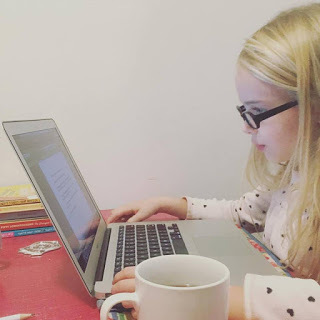 Harper hard at work
Harper hard at work
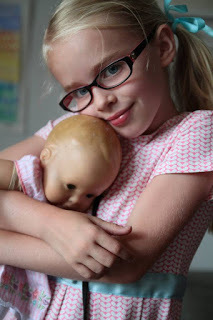 The dazzling young author with her daughter, Special baby
The dazzling young author with her daughter, Special baby
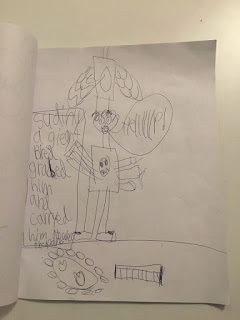 One of Harper's astonishing comic books
One of Harper's astonishing comic books
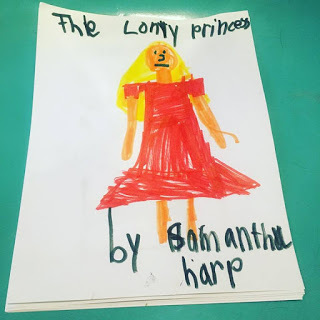 First Grader Harper's brilliant first novel, under her pen name
First Grader Harper's brilliant first novel, under her pen name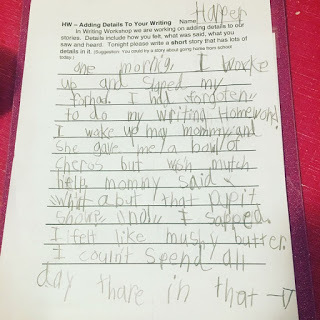 Harper candidly writes about feeling like mushy butter
Harper candidly writes about feeling like mushy butter
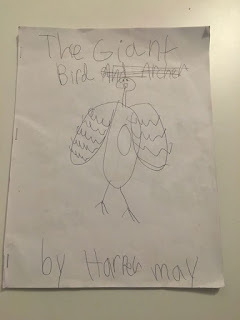 In The Giant Bird, Harper makes herself a character!
In The Giant Bird, Harper makes herself a character!
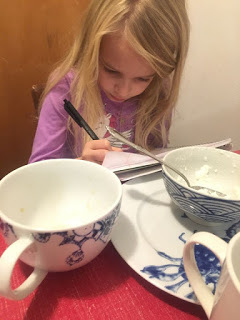 Even a scrumptious breakfast can't keep the dedicated Harper from writing
Even a scrumptious breakfast can't keep the dedicated Harper from writingWhat is more important than supporting dazzling new talent? Introducing Harper May, the daughter of acclaimed novelist and bon vivant Amy Shearn. Harper’s novel, The Lonly Princess is a thrilling edition to the literary scene. From the gorgeous cover (The princess is clearly not happy!) to the sublime writing inside, Harper shows she is a talent to be reckoned with. I can't wait to see what she will do, next! Thank you so much, Harper, for being so generous and so much fun to interview!
When did you start writing?
I started during kindergarten.
What is your writing day like? Do you have to have cookies before you write?
Well, I come home from work (aka school) and write.
P.S. I do have cookies!
The Lonly Princess is a masterwork, so I wanted to know how you came up with the idea?
To be honest, I don’t really know!
The cover is gorgeous! How did you come up with the design?
I thought about how she would feel.
What's next for you?
Well, The Lonly Princess is still sort of being worked on, but I’ll send you a new copy soon!
P.S. Lately I wrote a comic book called The Giant Bird.
Published on November 08, 2015 16:36
November 5, 2015
What's more amazing than being a NYT Bestselling novelist? Having your novel turned into an original dramatic series with Christina Ricci producing! Therese Fowler talks the amazement!
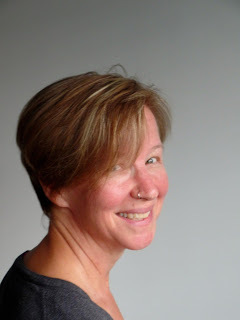
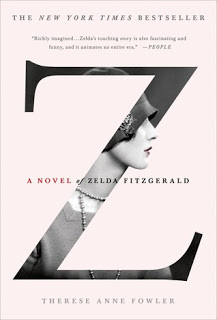
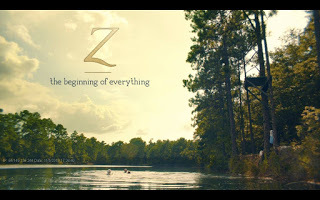
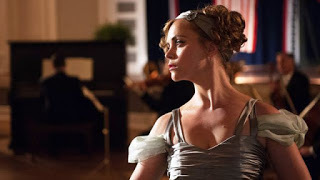
I first met Therese Anne Fowler at a book festival where we were appearing together--and I immediately loved her. Warm and generous, she's also a terrific writer (and it's not just me saying this--so does the New York Times and the zillions of readers who helped make her a mega-bestseller.) Her work has been translated into more than a dozen foreign languages and is published around the world. Her novel Z is currently in development as an original dramatic series for Amazon Studios with Killer Films and Christina Ricci producing. She's the author of Exposure, Reunion and Souvenir (all incredible novels) and she's working on a new novel about the Vanderbilts.
Her pilot is one of six that Amazon Films is showing and viewers can vote on the one they love the best. (Guess which one I'm rooting for?) I can't tell you how excited I am for her, and how thrilled I am that she's here.
And you can watch the pilot here.
What's the most startling thing about seeing your amazing novel turned into a film?
The visual realization of things that once lived entirely inside my head. Things that were little more than facts or anecdotes or photographs are alive and happening right now before my eyes. Christina Ricci suddenly is Zelda Fitzgerald. It’s uncanny.
This is really what every writer dreams of, and you are having it happen! Has watching the filming changed your writing at all? Has it made you more visual (though you are a visual writer to begin with.)
I am still astonished that this project actually got this far! Seeing the way the writers/showrunners Dawn Prestwich and Nicole Yorkin took parts of the novel and adapted them or recombined them to better fit the format of visual storytelling is more instructive than some people might think.
When I first saw the script early this year, all I could do was admire the efficiency of the scenes—they squeeze characterization, action, and setting into a much smaller space than most of us novelists do. Granted, they have the advantage of having visuals to do a lot of the work that we have to do with words, but even so, it made me aware that I can probably do more with less if I take the time to fully understand what it is I want and need to convey in each scene, and focus my revisions with that principle in mind.
What misconceptions did you have about Hollywood that you don't have anymore?
I thought that the director was always the boss—but in television it’s the showrunner(s) who makes the final call on whether a scene is doing what needs done. That’s not to say that the director’s vision isn’t hugely important; he or she is the person who makes the initial decisions on how to translate each element of the script into a working scene. But ultimately the showrunner says whether or not it’s a wrap and everyone can move on to the next scene on the schedule.
Also, I imagined that every production took months if not years of careful planning and organization. What’s actually true is that the assembly of the team (actors, director, producers) can take months or years, but the production itself—securing the locations, hiring caterers, drivers, crew, extras, acquiring costumes, etc.—can and very often does come together in a matter of weeks, once the team is in place and available to work.
Every actress brings nuances to every role and new interpretations. Ricci, an extraordinary actress, is playing Zelda--how does her interpretation add to yours in the novel?
That this show came to be in the way that it has is because Christina read Z when it was published in 2013 and saw in it an interpretation of Zelda that fit with her own belief about who Zelda was. She asked her manager to look into whether there was a film in the works; she wanted to audition for the lead role. When she learned that the rights were still available, she got in touch with Killer Films and, after about a year of behind-the-scenes effort, came to me with an offer to make the book into an ongoing series.
All of which is to say that from the moment I stood on the set and watched her be Zelda, I knew she was going to be able to demonstrate every nuance of Zelda’s complex, complicated, and fascinating character for film—which is a pretty tall order!
I want to also praise Tim Blake Nelson’s deft direction (along with, of course, the script). He and Christina seemed to have a genuine feel for the material and for each other’s talents, and it’s all beautifully realized in her performance in the pilot.
Do you write scripts? Do you want to, now? And what is it like on the set? Did you cry when you saw your novel come alive?
So far I have only ever dabbled at scriptwriting, but I do intend to do some screenplay work in the future.
The set was expertly organized chaos! So many people and so much equipment—cameras, lighting equipment, cables, sound equipment, monitors, tracks for cameras, strong young people toting things around, people with walkie-talkie radios, the writers, the director, various producers, makeup and hair teams—and yet in the center of it all, these incredibly talented actors behaving as though they were the only ones in the room.
At first I felt almost no sense of ownership or responsibility for any of what was happening. After all, I didn’t invent Zelda and Scott and their story, I just interpreted it for fiction. But when I saw and heard the characters saying lines that had come right out of my novel, it brought the whole thing home to me. The icing on that cake was when the studio executive who was on set got ready to leave one night and said to me, “Thank you for making all of this happen.” I was speechless. But no, I didn’t cry.
Published on November 05, 2015 12:16
Benilde Little talks about Welcome to My Breakdown, grief, happiness, writing, loss, and so much more!
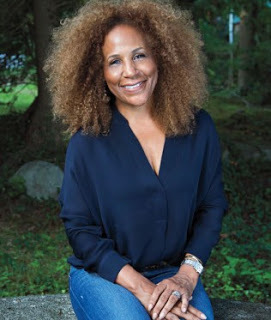
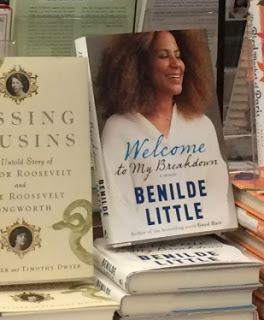
A week or so ago, I was having this wonderful lunch with the amazing Christina Baker Kline when we wandered into her favorite bookstore and she said, "Oh, I have to introduce you to Benilde!" Benilde Little is one of these people you instantly bond with. I even said to her, "You know, I think you are my new best friend," and I meant it. I swear, electricity and joy bounds off her. And she's written a fabulous memoir, Welcome to my Breakdown. She's also the author of Good Hair (one of the Ten Best Books of 1996 from the Los Angeles Time, ah hem), The Itch, Acting Out, and Who Does She Think She is? I'm thrilled to have her here, and the only thing better would be having coffee with her and Christina! Thank you so much, Benilde.
Benilde Little is the bestselling author of the novels Good Hair (selected as one of the ten best books of 1996 by the Los Angeles Times), The Itch, Acting Out, and Who Does She Think She Is? A former reporter for People and senior editor at Essence, she lives in Montclair, New Jersey, with her husband, two children, and a dog. Read her blog Welcome to My Breakdown at BenildeLittle.Wordpress.com. - See more at: http://authors.simonandschuster.com/B... Little is the bestselling author of the novels Good Hair (selected as one of the ten best books of 1996 by the Los Angeles Times), The Itch, Acting Out, and Who Does She Think She Is? A former reporter for People and senior editor at Essence, she lives in Montclair, New Jersey, with her husband, two children, and a dog. Read her blog Welcome to My Breakdown at BenildeLittle.Wordpress.com. - See more at: http://authors.simonandschuster.com/B... Little is the bestselling author of the novels Good Hair (selected as one of the ten best books of 1996 by the Los Angeles Times), The Itch, Acting Out, and Who Does She Think She Is? A former reporter for People and senior editor at Essence, she lives in Montclair, New Jersey, with her husband, two children, and a dog. Read her blog Welcome to My Breakdown at BenildeLittle.Wordpress.com. - See more at: http://authors.simonandschuster.com/B...
So this is your first memoir. How terrifying was that? And what did you learn from writing it?
I wouldn’t say it was terrifying. What I’d been through was, but writing about it was almost the easy part—although for me writing and easy are never in the same sentence. What was scarier was sitting on myself, of not writing. What I learned is that anything worth writing about should be scary. As I tell my kids when they’re faced with doing something new, something that’ll help them grow, to be afraid but do it anyway. I learned that my mother’s death wasn’t the sole reason for my depression, but I’d also lost myself. I was also mourning myself as a writer. I’d stopped writing and got lost in a domestic dungeon.
What kind of writer are you--and were you, in this memoir? Do you outline, have rituals, need chocolate and coffee? Were there moments of self-doubt and how did you conquer them?
This book was written in pieces, over chunks of time. Some of it, I honestly don’t know how I got it done. When I was in the thick of my depression, my memory just stopped working. In general, I do not outline, but usually write many drafts, about 3, before I figure out where I’m going. With this book I did do a bit of an outline, after I had hundreds of pages of just stuff.
I do not outline not when I write fiction. I have no rituals, but of course I need coffee, chocolate only sometimes. I try to watch what I eat, but when I’m writing anything sweet usually finds it’s way to me. There were years of self-doubt. I hadn’t published a book in nine years, since my last novel Who Does She Think She Is? The world had changed dramatically since then. I conquered the self-doubt the way I always do, I don’t actually, but getting my agent’s feedback helps tremendously. My agent, Faith Childs, is one of the smartest people I know and is a great reader, so if she thinks there’s something good in what I’m writing that’s usually enough to help me keep going.
What I loved about this book was how brave you were about writing about depression. So many people dismiss clinical depression as just the blues, but it isn’t--it’s many, many dark nights of the soul and it’s difficult to find your way out. But the book is also about grief--the death of your mother--and how that jump started depression, which began to change your worldview. Can you talk about all of this, please?
I still miss her, although it’s no longer a daily or even weekly thing and the pain does not cut into my marrow anymore. My worldview got a little more cynical because I’m conscious of feeling so much more alone. I’m no longer that idealist who believed nothing really bad ever happens. She was the person who understood me best and loved me the deepest so the absence of that is a tough thing to accept, but I have. I became the matriarch of my family and I don’t want to be, so I’m probably more resentful than I was. I’m waiting to get the feeling of freedom some people experience after they loose a parent, where you no longer give a crap, but that hasn’t happened to me. My husband says he felt that after losing his dad.
When it’s gone, it’s gone and there are no rituals to duplicate what my mother was to me. I have to live with that and sometimes it just makes me mad. I’ve never liked the holidays, but now I straight up hate them. She’s not here, so Thanksgiving is particularly sad for me.
There is something so incredibly helpful about your honesty in the book. It’s a kind of “I have been through this and survived and you can, too” which operates as a real life raft. Did you always know that you were writing this to help others, or, at first, was this your way of making sense of everything that had happened to you--and then it branched out to be universal?
It was a life raft for me, but I also knew that the book would help other people, especially women. For the Black women who come to my events—these are accomplished, polished professionals with all the trappings of “success.” These women are removing their masks. They open up about their disappointments and sadness and pain and in doing so, sharing it, realize that they are not alone. Knowing that I’m midwifing some of that, feels amazing.
So, yes, I knew that if this book could find an audience, it would open up a dialogue for women to grab hold of the life raft. The invitations to do book signings and speak to organizations, churches, libraries are increasing and it’s pretty much all been word of mouth. I’m thrilled. Generally, when you open up, other people will too.
Now, if you reread your memoir, what would you add? Is there anything that you now feel differently about?
Yes, there’s a lot I didn’t put in—there’s a story about a superstar mommy moment I had with my son after a devastating baseball championship loss, for which he’d been the pitcher and had felt responsible. He had decided that he was done with baseball. He broke the head of his second place trophy (very out of character). The next day my son, Ford, was to play in the all-star game. He refused. After his dad failed to talk Ford into playing, my husband asked me to give it a shot. I went down to the basement, where my son had slept the night before—in his uniform. I didn’t talk to Ford about baseball. I talked to him about life. I blabbed on about getting back on the horse. I must’ve talked non-stop for 15 minutes. At first he was turned away from me, then he put his head in my lap. Then I had him. I got him to go back the next day to play in that game. It was a highlight for me as a mom. I regret that I didn’t include more of my Newark childhood. I wrote some about my alma mater, Howard University, but after reading Ta-Nehisi Coates’ beautiful book where he so eloquently describes his time at Howard, I wish I could do mine over. He really described why Howard is so important, what it did for him. He described what it did for me. But I think everyone much feel some regret for what’s left out. Or is it just me?
I recently read this wonderful book by Claire Bidwell Smith, After This, which is about grief. A grief counselor herself, Smith talks about how the mistake many people make is to try to get over a death, rather than to realize there is still a relationship going on--and it will always go on. My mom is going to be 99, and I can’t imagine losing her. How do you personally still feel connected to your mother now that she is gone? Is it through memories? Through your own mothering?
Probably most through my own mothering, which so often feels exactly like hers: fiercely loving. They know just as sure as they walk and breathe that’d I’d die for them; no question, no hesitation. When I’m pushing hard at my son’s school, insisting they provide something for him that my taxes are paying for, for something he is owed and perhaps something other people aren’t getting because they aren’t demanding it, I can literally feel my mother inhabiting my body. I don’t have any rituals to I keep her alive, but she’s in me and I know that as surely as I walk and breathe.
What’s obsessing you now and why?
Young marriage—people who get married young. I’m thinking about my next book, a novel, and it’s kind of a meditation on marriage and the difference in marriages of people who do it when they’re young versus people who marry in their thirties to early 40s. I got married a month shy of my 34th birthday. I couldn’t imagine getting married in my 20s, but now I wonder what that would’ve been like. I find myself envying people who met in college and got married. This started when my daughter had her first serious boyfriend when she was 18. It lasted for about a year and a half and they were very serious. There was something so pure in their interaction that it changed my opinion about it. I can now see the benefit of marrying young. Right now though my I’m obsessively managing my son’s education (he just started high school), getting him and my 90-year-old father who has dementia, settled (moved). I’m spending much of my time on the phone and emailing. It’ll be over soon and I can get back to my work. One constant obsession is why is all of this grown up life so hard!!!
What question didn’t I ask that I should have?
Your questions were all good. I can’t think of anything that I’m dying to answer. Thanks for including me in your blog. I hope we get to talk again.
Published on November 05, 2015 10:10
Lisa McElroy talks about her "Paper Chase for the 21st Century" novel Called On, why law school is not a scam, being obsessive and so much more
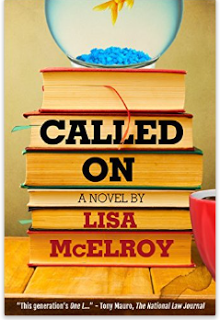
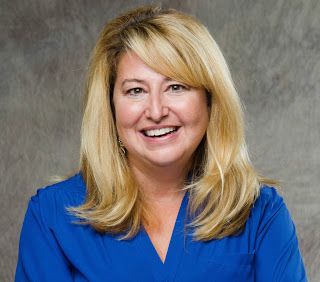
I always want to know how people work--not just writers--but doctors, scientists, trapeze artists, and lawyers, so I was happy to read Lisa McElroy's novel about law school, with the great title CALLED ON. Thank you so much for being here, Lisa!
I always want to know, what sparked the writing of this novel?
Several things sparked the writing of Called On. For 15 years, I've taught law students the craft of legal writing. In recent years, I'd become a bit detached from their struggles to figure out how to adapt their writing to this new genre and discipline. I decided that I needed to learn a new kind of writing myself, so that I could feel my students' pain.
I also wanted to respond in some way to the accusations swirling that law school is somehow a scam, that professors are only in it to take students' money, that hard work and deep thinking do not engender personal or professional satisfaction. The fictional law school in the novel is a top-tier institution, but the professor still cares about her students, and the hard workers are rewarded. Every law professor I know acts in good faith and wants to improve the profession. Called On is hopefully something of a showcase for that.
Your novel has been called “a Paper Chase for the 21st century.” How do you think things have changed--and has it been for the better?
The more things change, the more they stay the same. Law school is more focused today on experiential learning, on training to practice law. Still, the focus on law and justice will never go away, simply because they are such foundational concepts in any society. I hope that law professors have become less punishing, more interested in teaching, and less isolated in the ivory tower that is the academy. I hope that students have become more hands-on, more concerned with representing clients and helping people with problems and less money-driven.
I do know that the stereotypes persist, in my law school classroom, in my university, and in the legal world at large. Every generation of law students and law professors is given an enormous opportunity to eliminate the stereotypes, to change this very competitive and fish bowl-like culture in profound and positive ways. And, yes, law school is and always has been a fish bowl. The inclusion of a goldfish character was both a nod to Aaron Sorkin and The West Wing (best show ever on television, right down to the fishy character Gail) and a symbol for how we in law school communities function.
What kind of writer are you? Do you outline or did the story just come gifted from that pesky muse?
This is such a tough question, because the answer is "both" and "neither" and "other stuff too." I did start with an outlining technique that an experienced novelist recommended: I first wrote one sentence about what each chapter would cover; then I expanded that sentence into a paragraph; then that paragraph became a page. Because the novel has three main characters, on the page version I noted where each character was in every chapter, even if s/he didn't appear in the chapter.
But I have always said that I do not know what I am going to write until I sit down to write it; that's true for my creative non-fiction, as well. I believe strongly that I have ten little brains in the tips of my fingers (I'm a very fast, if very flawed, typist). Connections and thoughts and ideas and jokes just pour out of my fingers, usually when I've never consciously thought of them before. Felix's beds are a great example; I just found myself describing them at one point, because my fingers knew they were in Connie's apartment even when my brain didn't. The Halloween ball randomly appeared one day, as did Angel's penchant for sending emails full of sage advice from remote locations.
Finally, I'm a re-writer. I wrote the first draft of this novel in six weeks. I like to vomit onto the page - get everything out, then figure out what's in the wrong place and which babies have to be killed and what's missing. One of the biggest revisions to this novel involved Libby's mother. In the first draft, Libby's mom just wasn't present, and there was a single paragraph about how she hadn't wanted a kid. I was told that I needed to throw big rocks at my protagonist, give her hard problems. And my dear friend and early reader Lisa Belkin told me that the absence of Libby's mother was a really big rock that I didn’t explore. I spent a good six months trying to figure out what had happened to Libby's mom, and I discarded a lot of ideas; still, once I realized that the missing mom character was a big rock (like the dead friend in The Big Chill), I knew that she would add depth to Libby's story, both in terms of who Libby was as a person and why she was motivated to go to law school. And then I was able to get in a subplot about something that really mattered to me - and therefore really mattered to Libby.
I will say that the muse was generous in offering me memories. I had an Anderson-like character who was a stand-out person (note how neutral that description is) during my first year of law school. Creating Anderson was a lot of fun, because I could make him do what I wanted - something I could never achieve with the guy back in 1993.
And how did you manage to teach law and write about it as well?
Teaching law is the social part of my life. It lets me interact with students and colleagues and prevents me from holing up in my family room in my pajamas with my dogs and a 2-liter bottle of Diet Coke. Still, the actual teaching part of my job doesn't involve many on-the-ground hours. As a law professor, I'm required to write, although that requirement is usually thought to involve a scholarly agenda. The nice thing about tenure is that I have real freedom to write whatever I want. And as for time? Well, I don't clean my house (it's gross, really) and I don't go to the gym (as evidenced by my flabby tummy). That frees up a lot of time.
Did writing about the law change the way you see the law now? How so?
Writing about the law made me think more deeply about the law/justice dichotomy and gave me a platform for public education. I think that most people think that law and justice are the same thing; it can be really eye-opening to see how they these principles diverge. It also gave me an opportunity to seek out and highlight some commentators who have said really fun and interesting and profound things about the law, everyone from Dahlia Lithwick to Ira Glass to Justice Sandra Day O'Connor to Atticus Finch (the original, not the new version). I hope that readers might be intrigued to do further reading about these other folks' ideas, too.
What’s obsessing you now and why?
First, I want to know how you know I'm the obsessive type. :-) OK, here's a current list. My French bulldog, Louis (yes, named after Justice Brandeis), is the funniest clown in Pennsylvania and probably the world. My husband says that there are two kinds of people in the world: those who love Louis and those who haven't met Louis yet. At work, I'm obsessed with the next Presidential election and the effect that the next President will have in appointing Supreme Court Justices (four are currently over 70 years old). At home, I’m obsessed with not being a helicopter mom as my teen daughters do stuff like get driver's permits and apply to college. Perennially? Diet Coke and Honees cough drops and Stephen Sondheim and almond M & Ms and Vespa scooters and Madeleine L'Engle and old convertibles and the Red Sox and This American Life and the proper use of "less" and "fewer." Always.
What question didn’t I ask that I should have?
Do the names of the characters in Called On have any secret meaning? Libby's name and Connie's are both puns, although you might not get the Connie pun until the very last line of the novel. "Kraft" was intended to convey a personal quality; "Angel Behl" is a reference to It's a Wonderful Life. Felix Frankfurter and Breyer's names are tributes to two great Supreme Court Justices and are not intended in any way to offend. Sarah and Quinn? Not really. I just liked how they sounded. I will say that naming the characters in this book gave me fits of giggles.
Called On ends with some snippets of information about what happens to the characters next. Are you going to write a sequel? The answer is that I'm terrified. I loved writing this novel more than anything, and I'm truly convinced that I can never write another one. It's all about getting up the courage to jump off the diving board into waters that may be full of sharks but may be warm and lovely. Maybe next week?
Published on November 05, 2015 09:57
October 28, 2015
Barbara Shapiro talks about THE MURALIST, becoming a mega-bestseller, wrong turns that turned into right ones, and so much more
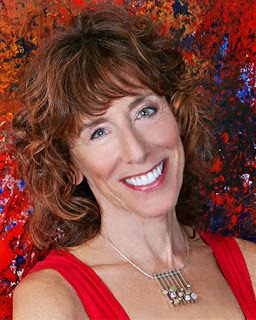
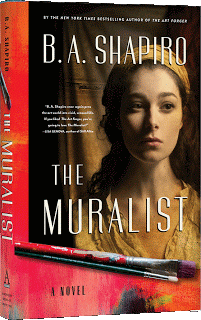
So here is the thing about Algonquin Books authors. We tend to support and adore one another--and we all know how lucky we are to have such a publishing house behind us--and such great writer friends. I first met Barbara Shapiro when she signed onto Algonquin. It was her first book with them--and my second--and we soon began having events together, going shopping, talking about boots, books and writing, and everything else. She is the author of seven novels (The Muralist, The Art Forger, The Safe Room, Blind Spot, See No Evil, Blameless and Shattered Echoes), four screenplays (Blind Spot, The Lost Coven, Borderline and Shattered Echoes) and the non-fiction book, The Big Squeeze.
Her last novel was on the New York Times Bestseller list and there's little doubt that this one will be there, too! Thanks so much, Barbara for being here!
So much of this extraordinary novel is about how art can influence politics--and vice versa. There are a lot of discussions about whether or not art can or should be provocative as well as great, that it can have a power beyond artistic merit, which I found fascinating. What do you hope to influence with this novel, which is surely art?
I do believe that art – and literature – should be provocative. If a novel or a painting doesn’t make us think, doesn’t make us ask questions of ourselves and of the world, then it’s just words on a page or paint on a canvas. I hope The Muralist both entertains and forces the reader to confront some difficult issues, particularly the plight of refugees, both then and now. What are the lessons we can learn for the past? And alternately, are we capable of learning them?
You became a mega best-seller with The Art Forger. How did that change the way you write? The way you look at publishing?
The success of The Art Forger had a huge impact on my writing, primarily that I quit my job and was able to write full-time. The ultimate gift. After five previous novels that didn’t do particularly well – to say the least – I now understand the power of a great publisher with a killer marketing and publicity team, and I thank Algonquin Books every day.
I love the line where a friend of the artist Alizee comments that ‘she wants to do something so badly that she can’t see what’s possible and what isn’t.” I love that push to try. And what is the cost if it isn’t possible? Do you think that trying is enough?
I don’t know if trying is enough, but I do know if you don’t try, then you’re never going to get what you’re striving for. I think the pain of losing is less than the pain of knowing that you didn’t give it your all. Or at least it is for me.
This remarkable story is told through the eyes of two people, present day Danielle, searching for the mural that her aunt--who went missing--painted. And the story of The Muralist Itself. I always have to ask what sparks a novel? What was haunting you so that you had to write this?
I wanted to write a novel set during the depression that had both art and a mystery in it. When I started my research, I discovered that when the WPA closed down its art section, they threw all the art in storage out on the street as trash. What if someone in the present found a box filled with these paintings? What if they were painted by Jackson Pollock, Lee Krasner and Mark Rothko, all of whom worked for the WPA in New York City? What if there were secrets hidden behind each of these paintings that led back a mystery in 1940? Hence, Danielle in the present and Alizee in the past.
The Muralist also explores the plight of the Jews trying to escape Nazi Germany and get to America and brings out horrifying things I didn’t know--that the United States was in no hurry to enter the war and save Jews. That Jews, as well as blacks, were already being persecuted in America. What else surprised you in the research?
Those things surprised me, as did the true story of Breckinridge Long, FDR’s man in charge of allocating visas to refugees. He was an ardent anti-Semite, and we now know that he was responsible for refusing congressionally approved visas to 200,000 refugees, who were forced to remain in Europe during WWII. We also know what happened to most of them.
So I have to act--where does your fascination with art and art history come from?
I wanted to be an artist when I was a little girl. My parents supported this and sent me to art classes. It quickly became apparent that I didn’t have any talent, so instead I became an art appreciator not creator. What better than to create protagonists who are artists so I can pretend to be them?
Tell me about your writing process of this novel. How did it differ from The Art Forger? What did you discover in the writing and were there any wrong turns that turned into right ones?
So many wrong turns. Four years of them. A few turned into right turns, but very painfully so. After writing for two years, I gave my manuscript to my editor, who was much less enamored of it than I was. Two more years of rewriting and rewriting and rewriting. What I discovered is that, for me at least, it takes a long time to get to the final product, and I just need to go with it. Good thing I like to rewrite – although not quite this much.
There are such fascinating cameos in the novel--from Eleanor Roosevelt to Jackson Pollock. I know you have fictionalized just about everything, but you still must have done some research in order to change it, right? So, what was your research like? Recently, the writer Mary Morris told me, when talking about research “never look for facts. look for the stories.” Care to comment? And I’d also love to know what surprised you in your research.
I couldn’t agree with Mary Morris more. A historical novel – even when it includes actual people – is a story above all else. It’s not necessarily about names and dates, which I see as background, it’s about a life lived during that historical moment with its ups and downs, its goals and obstacles, all of which illuminate the human condition, no matter when or where it takes place. I use research more for ideas than I do for facts.
What's obsessing you now and why?
I’m writing a new novel – working title, The Collector’s Assistant – about post-Impressionist and early modern art so I’m completely taken with the work of Matisse, Renoir, Picasso, etc. The book is set in Philadelphia and Paris during 1920 – 1936, so I’m also deep into research about that time and those places. But mostly I’m obsessed with my main character, a deeply damaged and flawed woman who does what she has to do to right the wrongs against her. Again, story over history.
What question didn’t I ask that I should have?
How do I feel about launching a new book following on the success of The Art Forger? Terrified.
Published on October 28, 2015 14:17
October 18, 2015
Mark Dunn talks about We Five, being obsessed AND iconoclastic, writing and having fun, and so much more
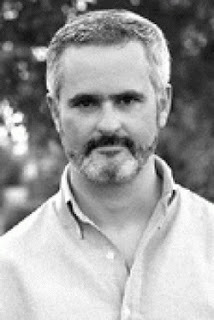
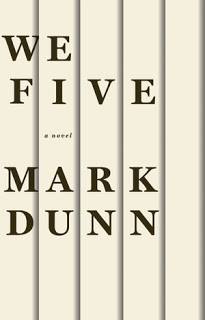
I think it is fair to say that I would read Mark Dunn's grocery list, especially since you just know it would be written so imaginatively that you would want to save and frame it. He's the acclaimed author of five previous novels and more than thirty full-length plays. His debut novel, Ella Minnow Pea, was winner of the Borders Original Voices Book of the Year, a finalist for the BookSense Book of the Year, and a Barnes & Noble Discover Great New Writers selected title.
We Five is stunningly imaginative, an amalgamation of five novels, about five different young women, in five different time periods. I am so honored to have Mark here to talk about it. Thank you a million times, Mark!
What was the idea that sparked this book, the thought that haunted you so you had to write it out?
For quite some time now I've been fascinated with all the different ways that writers tell their stories and, specifically, the various ways that different writers can tell the same stories, using their own voices and their own literary contexts to do this. I've been a fan of the Victorian author Elizabeth Gaskell for a while and wanted to share my interest in her work with readers, but at the same time I wanted, in effect, to partner with her, to tell a new story, but do it using her voice. I've also sensed in her writing that she wished to be even more honest (and daring) in her own storytelling but was hampered by the narrow Victorian strictures of the day in which she lived. What if Mrs. Gaskell had the same freedom that today's writers have? This question really excited me.
What made the project even more exciting was the possibility that her story might resonate with other writers in such a way that they would feel compelled to retell her story in their own times and in their own voices. I've "channeled" other writers and their styles before. An earlier novel of mine, FERAL PARK, was written in Jane Austen's voice. Likewise, many of the 100 stories that comprise AMERICAN DECAMERON were written in the styles of writers who were active in the periods in which the stories were set.
I decided to pretty much pull out all the stops with this one. Not only would one fifth of the book be voiced by Elizabeth Gaskell, but another fifth would be ostensibly written by someone quite comfortable with the wry, observational voice of America's Sinclair Lewis. The turn-of-the-20th century authors Frank Norris and Jack London are channeled, as well. For the version of the story set during the 1940 London Blitz I created an amalgamate voice from those British authors who wrote contemporaneously with that war. For the last version of Gaskell's story, set in Mississippi in 1997, I went with the voice I'm most comfortable with: Mark Dunn (channeling, somewhat, my novel WELCOME TO HIGBY, which also stomps this ground).
There wasn't a single epiphany-moment in which suddenly I knew I was going to write this novel in this special way; one idea simply built upon another and so-forth. Even the idea for the epilogue took its time getting to me.
This is truly one of the most ambitious novels I’ve read. You have five different female friends, five different suitors, five different historical periods (an epilogue, whose time frame I won’t spoil here), five different locations, and five different jobs through time. How difficult was it to structure the novel and what surprised you about it in the writing? Did you have a favorite period that you were writing about, and if so, why?
I like each of the story frames for different reasons. I enjoyed the freedom of language and expression that my contemporary Mississippi characters gave me. (I could use profanity and not have to answer for it!) The London chapters were a treat because I was writing about a place and a period in which, because of my initial unfamiliarity, required me to do quite a bit of historical research (something I really enjoy). I've also been a big fan of Sinclair Lewis and his witty, sometimes jaundiced take on middle America in the teens, twenties and thirties, and am especially comfortable writing about the 1920s, a period radically different in terms of culture and societal freedom than anything that preceded it. I've also always wanted to set a novel in 1906 San Francisco, which WE FIVE partly allowed me to do.
It wasn't difficult to structure the novel, although I did have to take care to guide the reader in such a way that the shared story thread didn't get lost. I had to strike a balance between giving each version of this story its own literary individuality while keeping true to the essence of each of the characters, which required solid character continuity. I rarely construct story outlines for my books (although I do ultimately impose a deliberate structure upon them as I go along) so I was constantly being surprised by the direction that the characters (who often seem to take over my stories) wanted me to go. There were moments in which I was shocked by the directions in which my characters were taking themselves, but I gave them their heads, because my many years of writing characters for stage and page have taught me that the character is almost always right.
My original feeling was that there would be a paradigm of good vs. bad/right vs. wrong that would define the book. I didn't realize that the characters would, none of them, fall so easily into those rigid boxes. Still, there is a tidiness to some aspects of the book which keeps it on a bit of a leash: the recurring theme of fives, for example, the distinction among the five climactic "apocalypses," and so forth.
I love the whole conceit of five different authors retelling the same story and that this book includes bits of each story. How did you juggle all these sensibilities and create a cohesive book while staying true to each of the authors’ intent?
One of the things I strove to do was to imagine each of these authors writing in a very specific time, which made me seek to make their voices contemporaneous with the period in which they were writing. You'll notice that none of the five authors is writing with blatant historical retrospection; they're writing about something that could very well have happened on that very day or in the very recent past. This kept their stories, for me at least, dynamic and immediate. One of the challenges for me was respecting what could and could not be said by an author at historical points that would not make the story too anachronistic or unrealistic. You'll notice as we progress through the time periods of the five versions of the primary story that behavior and language begins to loosen up. I did, for the sake of narrative continuity, have to take a few liberties. Jack London could not have written about Jane's rape with the frankness that Grady Larson did. Nor would Sinclair Lewis have been able to acknowledge, so freely, Cain's homosexuality and his obsessive love for Pat. (Although, interestingly, in Lewis's 1930 novel DODSWORTH, he has the eponymous character inadvertently visit a Berlin gay bar and make a couple of comments about what he saw there! Way to go, Sinclair!)
All of these women are searching for love- so hard they don’t see what the men chasing them are really doing. Since this goes on through all the time periods, I’m wondering, do you think gender wars have progressed at all? Or is it just...different?
Nothing really changes in the universal need for love. Perhaps society has allowed us to loosen the blinders a bit, but we all continue as human beings to make bad choices surrounding who our hearts tell us to love. People still take advantage of that vulnerability. Our lives even today are too often defined by that hunger to be loved and all the lousy outcomes that this hunger can lead to. Obviously, over time, women have become more empowered in society, but there will always be predatory men and vulnerable women. (And for that matter, predatory women and vulnerable men!) That doesn't change.
So much of the book is how catastrophe impacts our lives. Would you talk about that please?
One of the themes that I wanted to explore in the book was an existential one -- that when it comes right down to it, no matter what we do, no matter what choices we make for ourselves -- we are still at the mercy of a random universe that throws situations our way over which we have no control (and often don't even see coming!) In such a random universe anything can happen, and some of it very bad, even catastrophic. One of the things that keeps us going -- that allows us to thrive in such a haphazard, aleatory environment is the compensatory knowledge that there are those at our sides who care about us and look out for us. Families often play that role, but we don't choose our families. We do choose our friends. And we choose them mostly for positive reasons.
What kind of writer are you? Do you outline or do you wait for the muse?
As I mentioned above, I'm not a big outliner. Only one of my novels UNDER THE HARROW was so narratively complex and so broadly scoped in terms of its story, that I could not have written it without an extensive outline. But generally speaking, most of my books and plays, I've allowed initially to unfold on their own. Only in subsequent drafts do I go back in to shape and cut and rearrange the story elements -- in a sense, to "clean up" the narrative. With WE FIVE the muse was beside me for the whole process, though I did have to remind her that there was a certain protocol that had to be respected: the prescribed cycle of author participation, the need for each chapter to propel the reader to the next chapter as smoothly as possible given the radically different story presentations, and that there was an overarching narrative arc that needed to remain intact through the book.
What’s obsessing you now and why?
How did you know I was a hopelessly obsessive writer? My obsessive hope right now is that those who would enjoy this novel have the opportunity to discover it. The last few years of my journey as a writer have put me in partnership with two different publishing houses that didn't have the tools or resources to promote my work. A writer writes to be read, and I'm looking forward (with, yes, some obsessive trepidation) to finding from my new publisher, Dzanc Books, the opportunity to share my latest novel with interested readers.
What question didn’t I ask that I should have?
I suppose something might be said about an author who has made somewhat of a career out of finding new, often iconoclastic ways to tell his stories. Every novel I've written (and I loosely call AMERICAN DECAMERON a novel, since all of its 100 stories in the aggregate create something much larger than a simple "short story collection") have represented attempts by me to discover new and sometimes, as in the case of my progressively lipogrammatic novel ELLA MINNOW PEA, unique ways of creating narrative. Indeed, to my knowledge, no one has written a novel in a format similar to WE FIVE. This isn't brag -- simply exemplary of my belief that writers -- and novelists especially -- may be as narratively adventurous as they like and still remain accessible to their readers. Moreover, they can blaze new territory in the process. However, I don't consider any of my work "experimental" in that often pejorative sense. Still, I can never myself writing future novels in a safe, traditional style. What's the sense of being a writer if you can't have some fun?
Published on October 18, 2015 09:30

